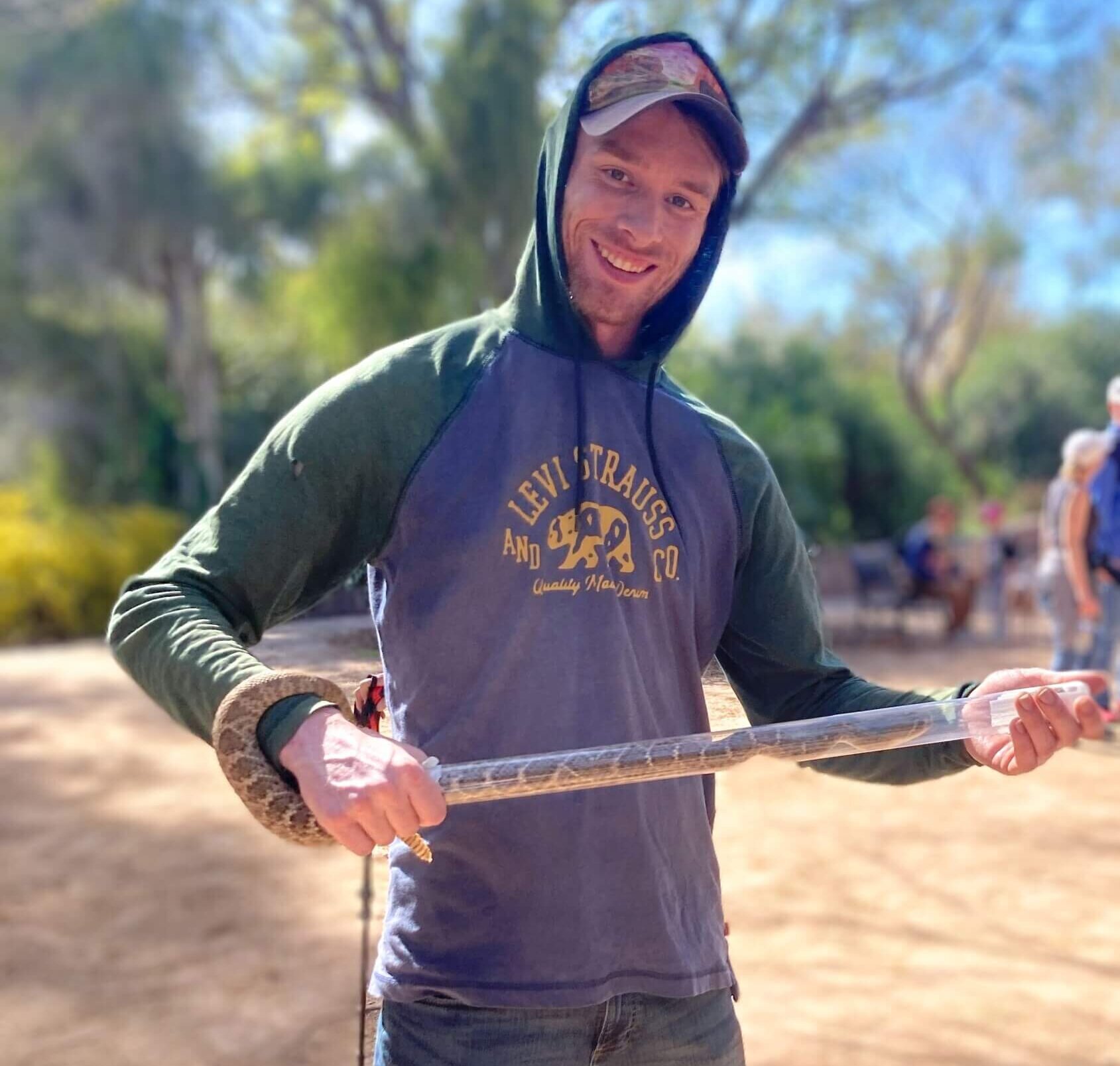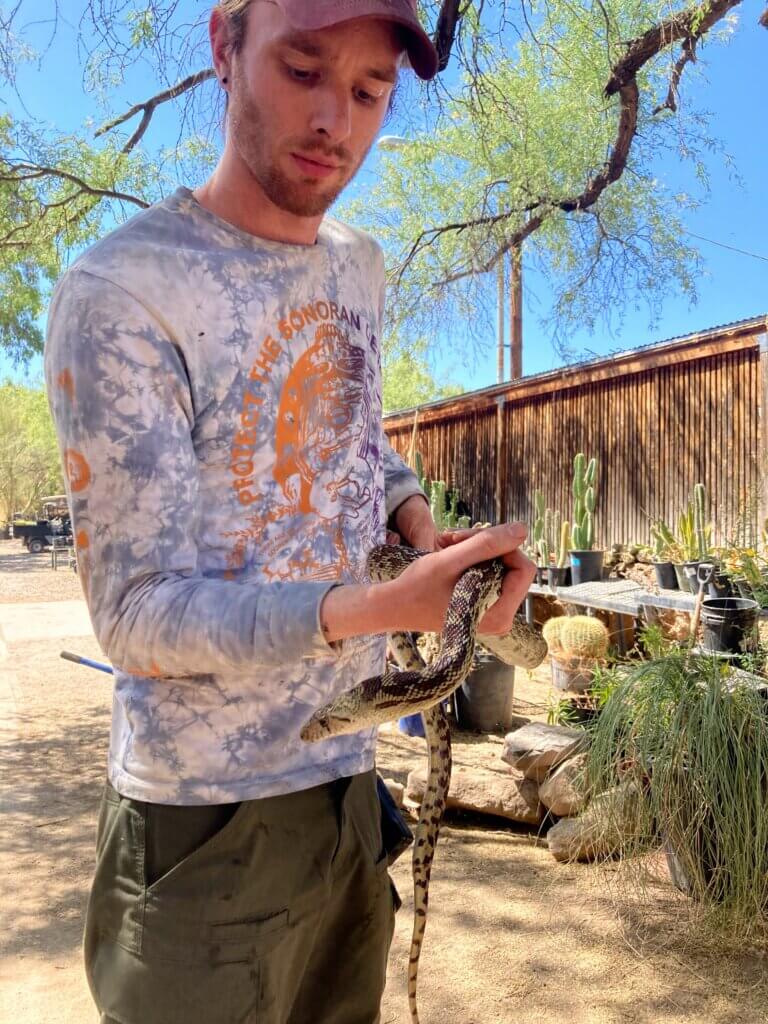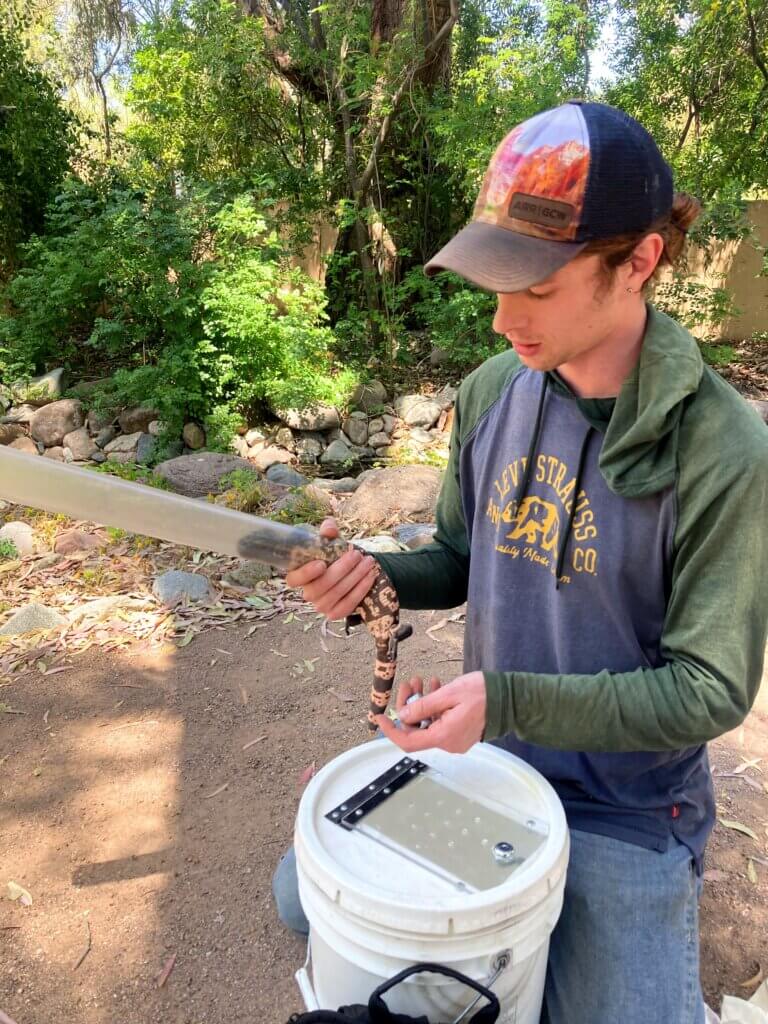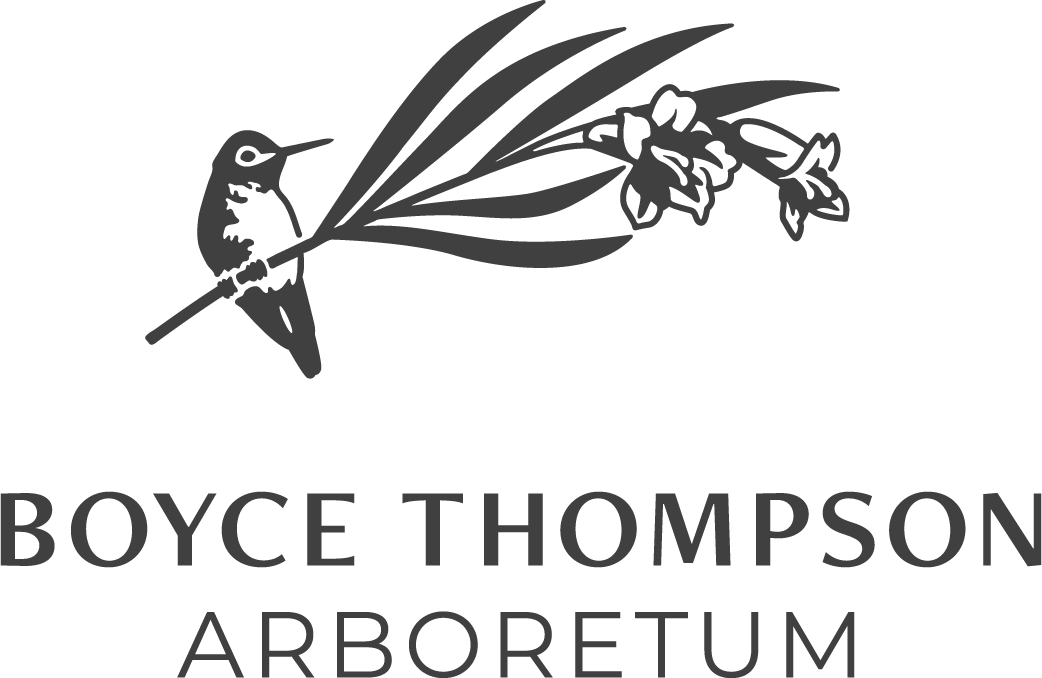The Impact of Humans on Venomous Reptile Habitats: Q&A with Researcher Jake Lee

Here at Boyce Thompson Arboretum, part of our mission is to inspire appreciation and stewardship of desert plants, wildlife and ecosystems through research. In support of our mission, we frequently host individuals who conduct important research onsite.
Today, we have the privilege of introducing you to one of these dedicated researchers. Jake Lee is pursuing a Master’s degree in Biology at Northern Arizona University. Under the guidance of Professor Dr. Erika Nowak, Jake is researching venomous reptiles at the arboretum as part of his academic pursuits.
In this exclusive Q&A session, we will delve into the life and work of our intrepid researcher. Gain insights into the challenges and rewards of studying venomous reptiles in one of the most biodiverse regions of the United States.

Tell us about your background. Why did you become a researcher? What drew you to this field?
I was inspired from a very early age to learn about animals and nature by the likes of Steve Irwin, David Attenborough, and others. After graduating from Western Kentucky University with a degree in wildlife ecology, I worked my way onto the National Park Service trail crew in Grand Canyon. My experience there caused me to fall in love with the southwest and desert ecology.
What are you researching at Boyce Thompson Arboretum?
I am studying the impacts of human development on the habitats of venomous reptiles, and management strategies for human/wildlife conflict.
What spurred this study?
The origin of this project was based around the relationship between my advisor, and the directors of Boyce Thompson Arboretum. There is a vested interest in making sure that the staff, visitors, and wildlife are all safe. Any mitigation strategy for resolving human-wildlife conflict is in the best interest of all parties.

What does a day researching at Boyce Thompson Arboretum look like for you?
The day-to-day is so varied, which keeps the work exciting. I could be catching, measuring, weighing, and microchipping rattlesnakes and gila monsters, or making a map of the site with drones. There is also a ton of paperwork and managing spreadsheets, which is not quite as fun.
What is your favorite aspect of your research? What excites you about your work?
The hands-on experience is so valuable, I am learning something new every day. I could be reading these things out of a textbook, but nothing beats observing for yourself.
What do you want to achieve with your research?
I would like to share my enthusiasm for these creatures with the staff and visitors of the arboretum, and I would like to know that the policies in place have people feeling safe around dealing with reptile encounters. I also want to take the skills and knowledge I am gaining with me to a career in federal land and resource management.
